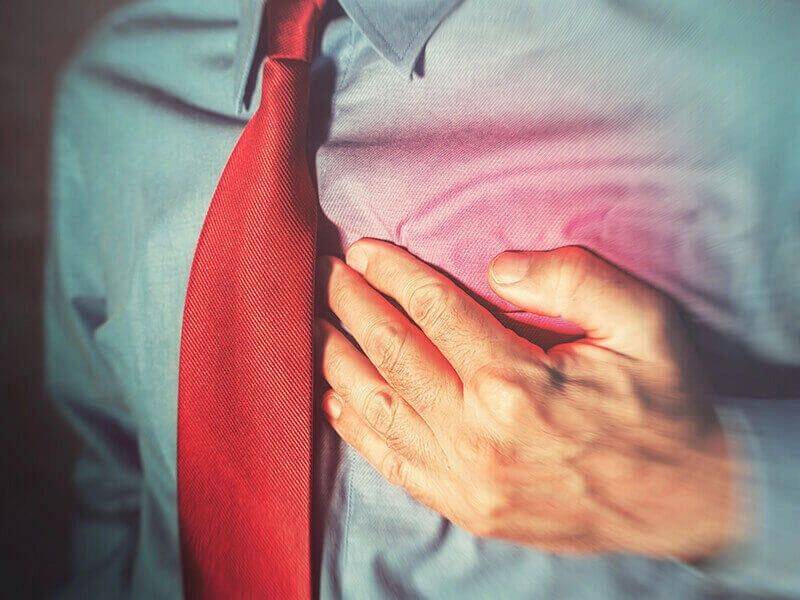Home/Wellness Zone/Sakra Blogs
10th Dec, 2016

What is a Heart Attack?
Our heart muscles need oxygen to survive. A heart attack occurs when the blood flow that brings oxygen to the heart muscles is severely reduced or cut off completely. This happens because coronary arteries that supply the heart muscle with the blood flow can slowly become narrow from a buildup of fat, cholesterol and other substances together known as plaque. This slow process is known as atherosclerosis. When a plaque in a heart artery breaks, a blood clot forms around the plaque. This blood clot can block the blood flow through the heart muscle. When the heart muscle is starved for oxygen and nutrients, it is called ischemia. When damage or death of part of the heart muscle occurs as a result of ischemia, it is called a heart attack or myocardial infarction (MI).
What are the causes and risk factors of a Heart Attack?
A heart attack occurs when one or more of your coronary arteries become blocked. Over time, a coronary artery can narrow from the buildup of various substances, including cholesterol – deposition of plaques (known as atherosclerosis). The process itself does not present with any symptoms and the condition is known as coronary artery disease, which is generally the cause of most heart attacks.
During a heart attack, one of these plaques can rupture and spill cholesterol and other substances into the bloodstream. A blood clot forms at the site of the rupture. If large enough, the clot can completely block the flow of blood through the coronary artery.
Another cause of a heart attack is a spasm of a coronary artery that shuts down blood flow to part of the heart muscle. Use of tobacco and of illicit drugs, such as cocaine, can cause a life-threatening spasm. A heart attack can also occur due to a tear in the heart artery (spontaneous coronary artery dissection).
Sometimes a coronary artery temporarily contracts or goes into spasm. When this happens the artery narrows and blood flow to part of the heart muscle decreases or stops. Though is it not sure what causes the spasm, but it can occur even in normal-appearing blood vessels as well as in vessels partly blocked by atherosclerosis. One such severe spasm can cause a heart attack.
What are the classical symptoms of a Heart Attack?
Common heart attack signs and symptoms include:
Pressure, tightness, pain, or a squeezing or aching sensation in the chest or arms that may spread to the neck, jaw or back
Nausea, indigestion, heartburn or abdominal pain
Shortness of breath
Fatigue
Lightheadedness or sudden dizziness
Heart attacks can manifest with different complaints in different patients. The classical symptom is a severe chest pain in the center of the chest, or maybe a little to the right or left, often described as a heaviness similar to a weight or a tight band around the chest and it may also radiate to the inside of the left arm or both the shoulders or even to the jaw or the upper back or upper abdomen. This may be associated with breathlessness, sweating, and sometimes loss of consciousness. These are some of the classic signs of a heart attack.
However, Bruising is not a manifestation of a heart attack. Bruising may be due to blood thinners that are used to treat heart attacks. But we should always remember that a heart attack does not always present with these kinds of symptoms. Patients may be having a heart attack even with symptoms like minor heartburn or excessive fatigability or only left arm pain and jaw pain particularly when they have coronary risk factors like smoking, blood pressure, diabetes, family history or age. So when these risk factors are there, the complaints can be a little different. So one should always be alert to the possibility of a heart attack in the presence of such different symptoms.
How can a Heart Attack be diagnosed and treated?
Ideally, screening should be done during regular physical examinations especially for patients who are at an increased risk of having a heart attack.
In an emergency situation for a patient presenting symptoms of a heart attack, it is essential to understand the exact symptoms and history of the patient and check the blood pressure, pulse and temperature. The patient might need to be hooked up to a heart monitor and will almost immediately need certain tests to be performed.
Tests that help check if the signs and symptoms, such as chest pain, indicate a heart attack or another condition. These tests include:
1. Electrocardiogram (ECG) – to record the abnormal electrical activity of the heart in case of a heart attack.
2. Blood tests – especially for certain cardiac enzymes that leak into the blood during damage to the heart muscles as occurs during a heart attack.
3. Additional tests that may be required are:
4. Chest X-ray
5. Echocardiogram
6. Coronary catheterization (angiogram)
7. Exercise stress test
8. Cardiac computerized tomography (CT) or magnetic resonance imaging (MRI)
Enquire Now
